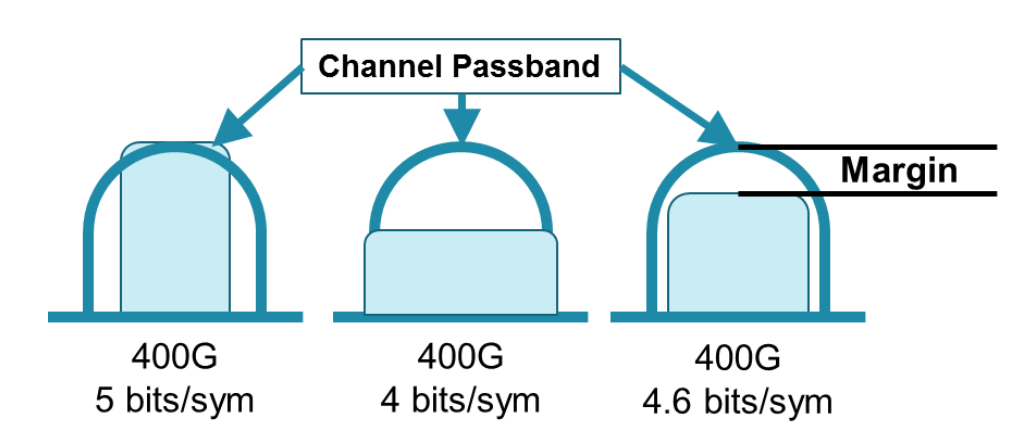Acacia announces a 1.2 terabit coherent module
 Tuesday, October 10, 2017 at 9:58AM
Tuesday, October 10, 2017 at 9:58AM Acacia Communications has given first details of its AC1200 coherent optical module, capable of transmitting up to 1.2 terabits of data. The custom coherent transceiver is being aimed at applications ranging from linking data centres to long-haul and even sub-sea transmissions and was announced at the recent ECOC show held in Gothenburg.
 Channel capacity and link margin can be maximised by using the fractional QAM scheme. Source: Acacia.
Channel capacity and link margin can be maximised by using the fractional QAM scheme. Source: Acacia.
The company is facing increasing market competition. Ciena has teamed up with Lumentum, NeoPhotonics, and Oclaro, sharing its high-end coherent DSP expertise with the three optical module makers. Meanwhile, Inphi has started sampling its 16nm CMOS M200, a 100- and 200-gigabit coherent DSP suitable for CFP2-ACO, CFP-DCO, and CFP2-DCO module designs.
The AC1200 is Acacia’s response, extending its high-end module offering beyond a terabit to compete with the in-house system vendors and preserve its performance lead against the optical module makers.






